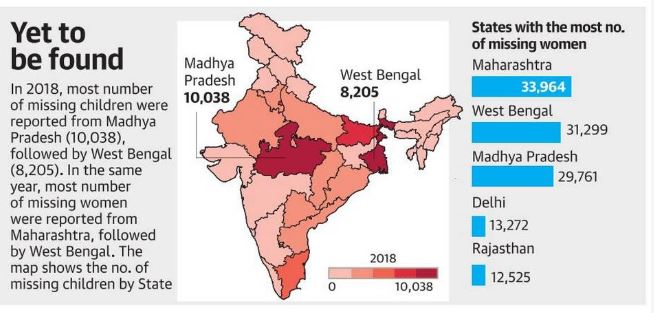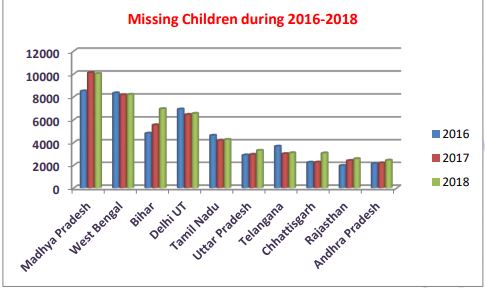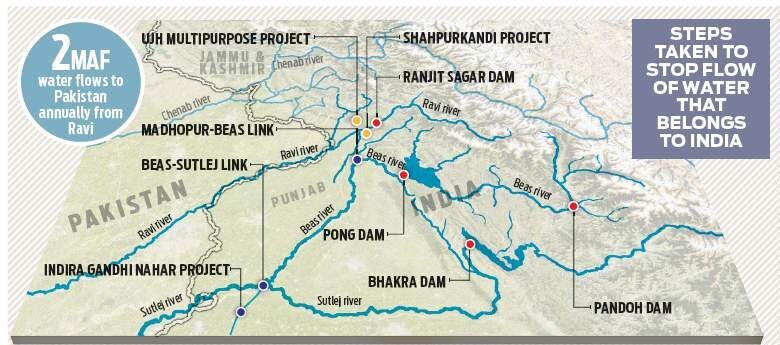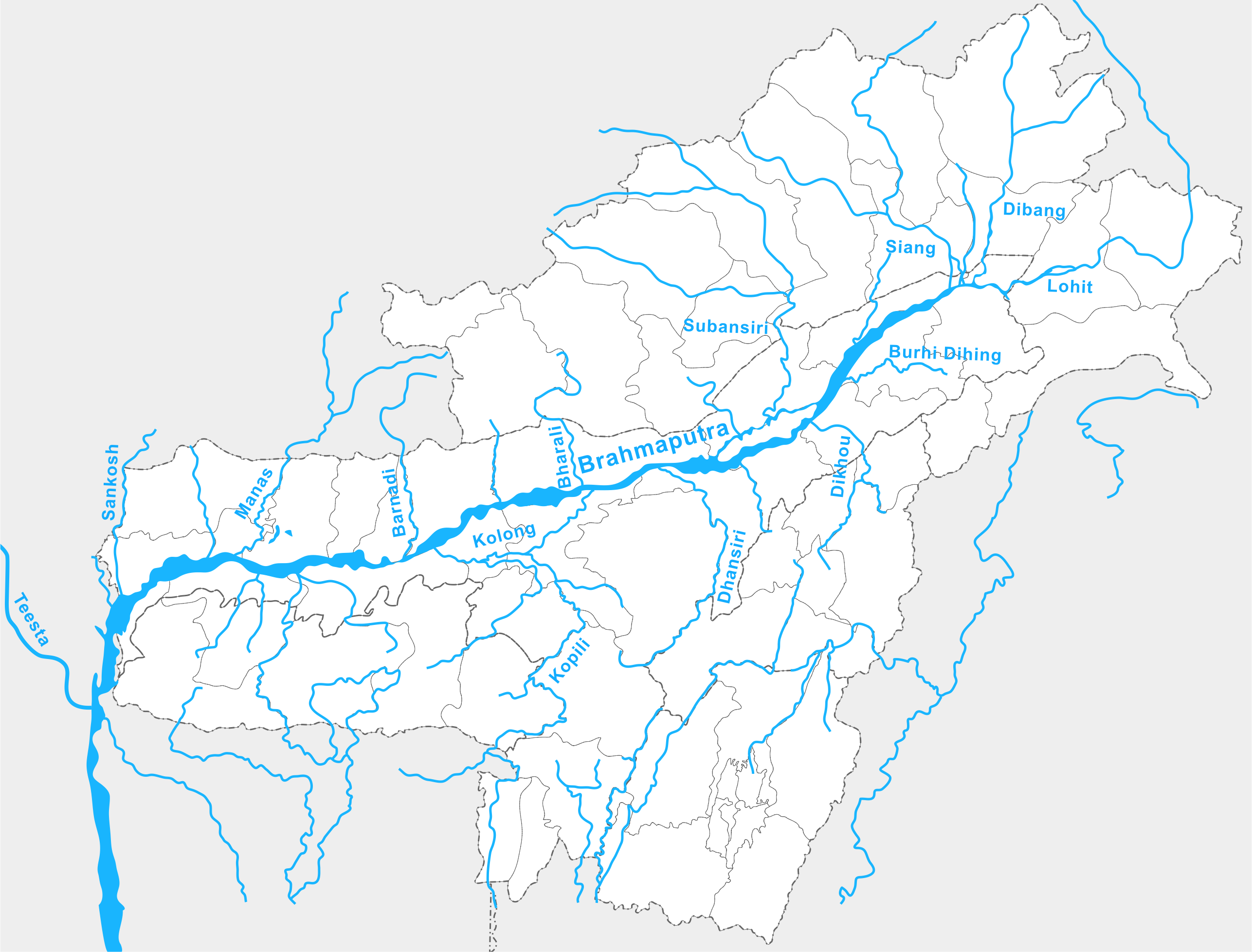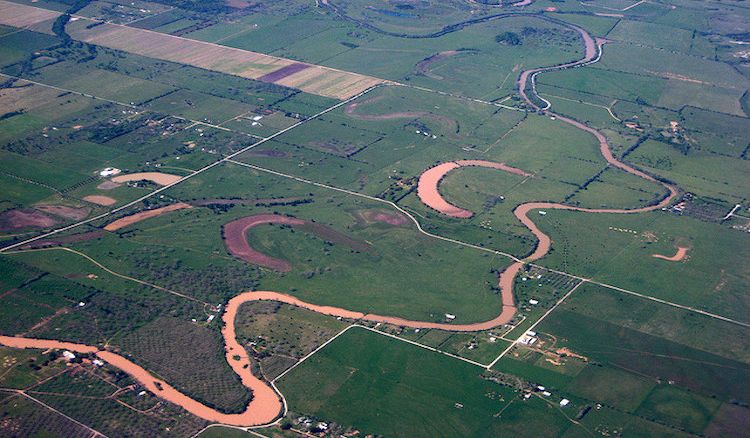Social Justice
Missing Women and Children in India
Why in News
Recently, the National Crime Records Bureau (NCRB) has released a study on missing persons (especially on women and children) in India.
- The analysis was directed by the Supreme Court of India in 2019 to identify the areas prone to child and women trafficking.
- Some parts of the country report higher incidents of missing children and women which could be one of the sources, transit or destination for child /women trafficking.
- The data for the study has been taken from the annual Crime in India (CII) report compiled by the NCRB for the years 2016, 2017 and 2018.
Global Scenario
- The United Nations Office on Drugs and Crime (UNODC) Global report 2018 on trafficking in persons indicates that the vast majority of the detected victims of trafficking for sexual exploitation are females.
- More than half of the victims of trafficking for forced labour are men and 35 % of them are females.
- The reasons for missing include mental illness, miscommunication, misadventure, domestic violence, and being a victim of crime. Whereas the common cause of trafficking is forced marriage, child labour, domestic help and sexual exploitation etc.
National Scenario
- Missing Women
- Maharashtra registered the maximum number of missing women followed by West Bengal.
- Maharashtra, West Bengal and Madhya Pradesh are three most vulnerable states.
- Mumbai and Pune (Maharashtra), Kolkata (West Bengal) and Indore (Madhya Pradesh) recorded the highest number of such incidents.
- Missing Children
- The number of missing children are maximum in the State of Madhya Pradesh, West Bengal, Delhi and Bihar.
- Indore reported the highest number of missing children. Whereas West Bengal’s Nadia district, bordering Bangladesh, showed a steep increase from 291 missing children reports in the year 2017 to 474 in 2018.
National Crime Record Bureau
- The National Crime Record Bureau (NCRB) was set-up in 1986 under the Ministry of Home Affairs.
- It functions as a repository of information on crime and criminals so as to assist the investigators in linking crime to the perpetrators.
- It was set up based on the recommendations of the National Police Commission (1977-1981) and the MHA’s Task Force (1985).
- NCRB brings out the annual comprehensive statistics of crime across the country (‘Crime in India’ report) since 1953. The report serves as a crucial tool in understanding the law and order situation across the country.
Social Justice
World Cancer Day
Why in News
The World Health Organisation (WHO) and it’s specialized International Agency for Research on Cancer (IARC) have released two reports on the occasion of World Cancer Day (4th February).
- The reports aim to set the global agenda on cancer, mobilise stakeholders and help countries set priorities for investing in cancer control and universal health coverage.
Key Points
- Global Scenario:
- The report has warned that one in five people worldwide would face a cancer diagnosis in their lifetime.
- The overall cancer cases in the world would rise by 60% by 2040 and tobacco use is responsible for 25% of cancer deaths in the world.
- Less than 15% of low- and middle-income countries offer comprehensive cancer treatment services through their public health systems, compared to higher-income countries.
- Better cancer treatment in high-income countries has resulted in a 20% drop in mortality between 2000 and 2015 whereas only 5% drop is observed in the case of low and middle-income countries.
- Thus cancer cases would rise by 81% in low- and middle-income countries by 2040 because of a lack of investment in prevention and care.
- At least 7 million lives could be saved over the next decade, by identifying the most appropriate science for each country's situation by basing strong cancer responses on universal health coverage, and by mobilizing different stakeholders to work together.
- National Scenario:
- 1 in 10 Indians will develop cancer during their lifetime, and 1 in 15 Indians will die of cancer.
- There are an estimated 1.16 million new cancer cases, 7,84,800 cancer deaths in India.
- The six most common cancer types in India are breast cancer, oral cancer, cervical cancer, lung cancer, stomach cancer, and colorectal cancer. Together, these account for 49% of all new cancer cases.
- Tobacco-related cancers account for 34-69% of all cancers in men and constitute 10-27% of all cancers in women in most regions in India.
World Cancer Day
- World Cancer Day is organized by the Union for International Cancer Control (UICC) and celebrated each year on 4 February.
- It aims to rally the international community to end the injustice of preventable suffering from cancer.
- The theme for 2020 is ‘I Am and I Will’ which acknowledges that everyone has the capacity to address the cancer burden.
International Agency for Research on Cancer
- The International Agency for Research on Cancer (IARC) was created in 1965 by a resolution of the World Health Assembly, as the specialized cancer agency of the World Health Organization.
- The objective of the IARC is to promote international collaboration in cancer research.
- It comprises 27 member countries. India is a member of it.
- It is Headquartered at Lyon in France.
Science & Technology
Sophisticated Analytical & Technical Help Institutes: SATHI
Why in News
The Department of Science & Technology (Ministry of Science and Technology) has launched a unique scheme called Sophisticated Analytical & Technical Help Institutes (SATHI).
- The DST has already set up 3 such centres in the country, one each at IIT Kharagpur, IIT Delhi and BHU. It is planned to set up 5 SATHI Centres every year for the next four years.
- These Centres have major analytical instruments and advanced manufacturing facilities to provide common services of high-end analytical testing, thus avoiding duplication and reduced dependency on foreign sources.
Key Points
- Science and Technology infrastructure:
- Address the need for shared, professionally managed and strong Science and Technology infrastructure in the country which is easily accessible to academia, start-ups, manufacturing, industry and R&D labs.
- Efficient Use of Equipments:
- Address the problems of accessibility, maintenance, redundancy and duplication of expensive equipment in Institutions.
- Intellectual Property Rights :
- Address the issue of Intellectual property (IP) creation and protection, a digital platform will be created which will facilitate seamless application and capture IPRs (Intellectual Property Rights).
- Knowledge Translation Clusters:
- These clusters will be set up across different technology sectors including in new and emerging sectors for designing, fabrication and proof of concept and further scaling up technology clusters.
- Besides the SATHI initiative, extra funds to 100 top-performing departments in universities and IITs etc will be provided in 2020 for augmentation of their research facilities to global benchmarks.
- The research efforts of these supported departments will be in sync with the national priorities of excellence in manufacturing, waste processing, clean energy and water, and Start-up India, etc.
Note
- SAATHI (Sustainable and Accelerated Adoption of efficient Textile technologies to Help Small Industries) Initiative
- It is an initiative of the Ministry of Textiles.
- Objective: To sustain and accelerate the adoption of energy efficient textile technologies in the powerloom sector and cost savings due to use of such technology.
- SATH (Sustainable Action for Transforming Human capital) Program
- It is a program of NITI Aayog.
- Objective: To initiate transformation in the education and health sectors and build 3 future ‘role model’ states.
- The program addresses the need expressed by many states for technical support.
Biodiversity & Environment
Coral Restoration Through Biorock
Why in News
The Zoological Survey of India (ZSI), with help from Gujarat’s forest department, is attempting for the first time a process to restore coral reefs using biorock or mineral accretion technology.
Mineral Accretion Technology
- Also called ‘Biorock Technology’, it is a method that applies safe, low voltage electrical currents through seawater, causing dissolved minerals to crystallize on structures, growing into a white limestone (CaCo3) similar to that which naturally makes up coral reefs and tropical white sand beaches.
- Biorock, also known as Seacrete or Seament, refers to the substance formed by electro-accumulation of minerals dissolved in seawater.
- The formed material has a strength similar to concrete. It can be used to make robust artificial reefs on which corals grow at very rapid rates.
- Fragments of broken corals are tied to the biorock structure, where they are able to grow at least four to six times faster than their actual growth as they need not spend their energy in building their own calcium carbonate skeletons.
- The technology also helps corals, including the highly sensitive branching corals, to counter the threats posed by global warming.
- Working
- The technology works by passing a small amount of electrical current through electrodes in the water.
- When a positively charged anode and negatively charged cathode are placed on the seafloor, with an electric current flowing between them, calcium ions combine with carbonate ions and adhere to the structure (cathode). This results in calcium carbonate formation (CaCo3).
- Coral larvae adhere to the CaCO3 and grow quickly.
- Biorock projects can be powered by a wide range of electrical sources including renewable energy like windmills, photovoltaic solar panels and tidal current generators. This enables their construction in areas where conventional electric power is unavailable.
- The mineral accretion process was first developed by architect Wolf Hilbertz in 1976 in order to provide alternative construction materials. He and Tom Goreau of the Global Coral Reef Alliance later developed its use for reef restoration and shore protection.
Use of Technology in India
- A biorock structure was installed one nautical mile off the Mithapur coast in the Gulf of Kachchh on 19th January, 2020. The scientists have used solar panels for power in this case.
- The calcification (conversion into calcium carbonate) has started but real success will come when attached and new organisms (corals) start grow faster.
Coral Reefs
- Corals are made up of genetically identical organisms called polyps. These polyps have microscopic algae called zooxanthellae living within their tissues.
- The corals and algae have a mutualistic relationship.
- The coral provides the zooxanthellae with the compounds necessary for photosynthesis.
- In return, the zooxanthellae supply the coral with organic products of photosynthesis, like carbohydrates, which are utilized by the coral polyps for the synthesis of their calcium carbonate skeletons.
- Zooxanthellae are also responsible for the unique and beautiful colors of corals.
- It is the above relationship that allows shallow water corals to grow fast enough to build the enormous structures called reefs.
- Often called the “rainforests of the sea,” coral reefs are home to a spectacular variety of organisms.
- India has four major coral reefs areas: Andaman and Nicobar Islands, Lakshadweep, Gulf of Mannar and the Gulf of Kachchh.
- The coral reefs are threatened by climate change induced acidification as well as by anthropogenic factors such as overfishing, pollution.
Zoological Survey of India
- The Zoological Survey of India (ZSI) is a subordinate organization of the Ministry of Environment and Forests which was established in 1916.
- It is a national centre for faunistic survey and exploration of the resources leading to the advancement of knowledge on the exceptionally rich faunal diversity of the country.
- It has its headquarters at Kolkata and 16 regional stations located in different geographic locations of the country.
International Relations
Ujh Multipurpose Project
- Ujh Multipurpose Project is planned to fast track utilization of India's rights under Indus Waters Treaty.
- The project will enhance the utilization of waters of Eastern Rivers allotted to India as per the Indus Water Treaty.
- Location: The project is planned to be constructed in Kathua District of Jammu & Kashmir on the River Ujh.
- Ujh is a tributary of the Ravi river.
Indus Waters Treaty
- The Indus system comprises the Indus, Jhelum, Chenab, Ravi, Beas and Sutlej. The basin is shared by India and Pakistan.
- Under the Indus Waters Treaty signed between India and Pakistan in 1960, the waters of three rivers, namely Ravi, Sutlej and Beas (Eastern Rivers) shall be available for the unrestricted use of India.
- While, the waters of Western rivers - Indus, Jhelum, and Chenab were allocated to Pakistan except for specified domestic, non-consumptive and agricultural use permitted to India as provided in the Treaty.
- India has also been given the right to generate hydroelectricity through run of the river (RoR) projects on the Western Rivers which, subject to specific criteria for design and operation is unrestricted.
- India is also allowed to use 20% of water from Indus, Chenab and Jhelum (Western rivers) for irrigation, power generation and transport purposes.
- This is a unique treaty involving a third party since it was brokered by the World Bank.
- A Permanent Indus Commission was set up as a bilateral commission to implement and manage the Treaty.
- The Commission solves disputes arising over water sharing.
- The Treaty also provides an arbitration mechanism to solve disputes amicably.
Biodiversity & Environment
Forest Fire Prevention and Management
Why in News
Minister of State for Environment, Forests and Climate Change (MoEF&CC) has provided information about forest fires management and prevention during a reply to the question tabled in Rajya Sabha (Budget Session 2020).
Key Points
- The area covering 93,273 hectares was affected by forest fires in 2019. However, it also includes “ground fires”, i.e. burning of ground vegetation.
- Forests are a subject in the concurrent list of the Seventh Schedule of the Indian Constitution. The MoEF&CC has prepared a National Action Plan on forest fires (2018) after consultation with all states and Union Territories.
- Additionally, MoEF&CC also provides forest fire prevention and management measures under the Centrally Sponsored Forest Fire Prevention and Management scheme,
National Action Plan on Forest Fires
- National Action Plan on Forest Fires (NAPFF) was launched in 2018 to minimise forest fires by informing, enabling and empowering forest fringe communities and incentivising them to work with the State Forest Departments.
- The plan also intends to substantially reduce the vulnerability of forests across diverse forest ecosystems in the country against fire hazards.
- It also aims to enhance capabilities of forest personnel and institutions in fighting fires and swift recovery subsequent to fire incidents.
Forest Fire Prevention and Management Scheme
- The Forest Fire Prevention and Management Scheme (FPM) is the only centrally funded program specifically dedicated to assist the states in dealing with forest fires.
- The FPM replaced the Intensification of Forest Management Scheme (IFMS) in 2017. By revamping the IFMS, the FPM has increased the amount dedicated for forest fire work.
- Funds allocated under the FPM are according to a center-state cost-sharing formula, with a 90:10 ratio of central to state funding in the Northeast and Western Himalayan regions and a 60:40 ratio for all other states.
- It also provides the states to have the flexibility to direct a portion of the National Afforestation Programme (NAP) and Mission for Green India (GIM) funding toward forest fire work.
Science & Technology
Vikram Sarabhai Centenary Programme
Why in News
Indian Space Research Organisation (ISRO) and Department of Atomic Energy (DAE) are conducting various events at national level in a year long programme to commemorate the 100th birth anniversary of Dr. Vikram Sarabhai.
Key Points
- The celebrations began on 12 August, 2019 in Ahmedabad, where Sarabhai was born on the same day in 1919. He also led the establishment of the Physical Research Laboratory (PRL) in the city in 1947.
- The celebrations would conclude exactly a year later, i.e. on 12 August, 2020 in Thiruvananthapuram, Kerala where he had set up the first rocket launching station of India.
- ISRO has recently announced the ‘Vikram Sarabhai Journalism Award in Space Science, Technology and Research’, as part of the centenary year celebrations of Dr. Vikram Sarabhai, the father of Indian space programme.
Department of Atomic Energy
- The Indian Atomic Energy Commission was first set up in August 1948 in the Department of Scientific Research.
- The Department of Atomic Energy (DAE) was set up on August 3, 1954, under the direct charge of the Prime Minister.
- Subsequently, the Atomic Energy Commission (AEC) was brought under the Department of Atomic Energy.
- The Secretary to the Government of India in the Department of Atomic Energy is ex-officio Chairman of the Commission.
- DAE has been engaged in the development of nuclear power technology, applications of radiation technologies in the fields of agriculture, medicine, industry and basic research.
Vikram Sarabhai
- Vikram Ambalal Sarabhai, (born August 12, 1919, Ahmadabad, India—died December 30, 1971, Kovalam), was an Indian physicist and industrialist who initiated space research and helped develop nuclear power in India.
- Remembered as the founding father of the Indian space programme, Sarabhai set up the Physical Research laboratory in his hometown in Ahmedabad in 1947 which was a precursor to the ISRO.
- After the death of physicist Homi Bhabha in 1966, Sarabhai was appointed the chairman of the Atomic Energy Commission of India.
- Sarabhai was awarded two of India’s highest honours, the Padma Bhushan (1966) and the Padma Vibhushan (awarded posthumously in 1972).
Science & Technology
Classical Swine Fever Vaccine
Why in News
The live attenuated Classical Swine Fever (CSF) Vaccine technology developed by the Indian Veterinary Research Institute (IVRI) has been released recently.
- Live Attenuated Vaccines (LAV) are vaccines prepared from living microorganisms (viruses, bacteria) that have been weakened under laboratory conditions.
Key Points
- CSF is one of the diseases of pigs causing high mortality with annual loss of approxminately Rs.4.299 billion.
- A lapinized CSF vaccine (uses Weybridge strain, UK) has been used in India since 1964 for controlling the disease. The vaccine is produced by sacrificing large numbers of rabbits for each batch.
- Lapinized denotes viruses which have been adapted to develop in rabbits by serial transfers in this species.
- The country’s total requirements is 22 million doses per year. However, hardly 1.2 million doses are produced per year by the lapinized vaccine.
- In order to do away sacrificing rabbits and increase productivity, IVRI had earlier developed a cell culture CSF vaccine by adapting the lapinized vaccine virus in cell culture.
- Cell culture refers to the maintenance and growth of the cells of multicellular organisms outside the body in specially designed containers and under precise conditions of temperature, humidity, nutrition, and freedom from contamination.
- Since the cell culture vaccine is from a foreign strain (Weybridge Strain, UK), IVRI has further developed a new CSF Cell Culture Vaccine by attenuating an indigenous virulent CSF virus in cell culture. The vaccine virus has a very high titre (concentration) and lakhs of doses can be produced very easily in cell culture and the country's requirement can be easily fulfilled using this new vaccine.
- Due to the very high titre of vaccine virus, this vaccine would be the most economical CSF vaccine.
- Besides, the new vaccine gives immunity for two years as compared to 3 to 6 months protection under the vaccines currently being used.
Indian Veterinary Research Institute
- IVRI is the Indian Council of Agricultural Research (ICAR) institute.
- Established in 1889, IVRI is one of the premier research institutions dedicated to livestock research and development of the region.
Important Facts For Prelims
Blue Dot Network
Why in News
India may join the US-led Blue Dot Network (BDN).
- The BDN was formally announced on 4th November, 2019 at the Indo-Pacific Business Forum in Bangkok, Thailand. It will be led by the US along with Japan and Australia.
- It is a multi-stakeholder initiative to bring together governments, the private sector and civil society to promote high-quality, trusted standards for global infrastructure development.
- It is expected to serve as a globally recognised evaluation and certification system for roads, ports and bridges with a focus on the Indo-Pacific region.
- Infrastructure projects would be graded on debt, environmental standards, labour standards etc.
- This system would apply to projects in any citizen-centric country where citizens would like to evaluate such projects.
- It seems to be planned as a direct counter to China’s Belt and Road Initiative (BRI). However, unlike the BRI, the BDN would not offer public funds or loans for the project. BDN will serve as a globally recognized seal of approval for major infrastructure projects, letting people know that projects are sustainable and not exploitative.
- India has not joined China’s BRI.
-
Till 2019, China’s investment in BRI projects in various countries exceeds US$90 billion. Instead of trying to match China’s scale of spending, the US through Blue Dot Network is arguing that the quality of investments in infrastructure is just as important as the quantity.
-
The new Blue Dot Network, therefore, is best seen as part of the U.S.A.'s strategy of trying to persuade developing countries in Asia-Pacific not rely on Chinese funds for infrastructure.
-
Belt and Road Initiative
- BRI is an ambitious project that focuses on connectivity and cooperation among multiple countries spread across the continents of Asia, Africa, and Europe.
- Initially announced in the year 2013, the project involves building networks of roadways, railways, maritime ports, power grids, oil and gas pipelines, and associated infrastructure projects.
- The project covers two parts.
- Silk Road Economic Belt: It is land-based and is expected to connect China with Central Asia, Eastern Europe, and Western Europe.
- 21st Century Maritime Silk Road: It is sea-based and is expected to connect China’s southern coast to the Mediterranean, Africa, South-East Asia, and Central Asia.
Important Facts For Prelims
Mukti Caravan
Why in News
Mukti Caravan is being run in the state of Rajasthan.
- Mukti (liberation) Caravan is a campaign to raise awareness about evils like child trafficking, child labour and child sexual abuse.
- Activists, government officials, theatre artists, National Legal Services Authority representatives, judiciary and other stakeholders are part of this campaign.
- Street plays, songs, wall art and small group meetings are some activities, among others, to spread awareness about the trafficking of children, child sexual abuse. Discussion will focus on solutions to these evils and laws which can stop them.
- Reason behind the program: Child trafficking is rampant in India. 60% of the victims of human trafficking are children.
- Mukti Caravan was launched by Nobel peace laureate Kailash Satyarthi in 1997.
Important Facts For Prelims
Santusht Portal
Why in News?
The Ministry of Labour and Employment has launched ‘Santusht portal’ to monitor the implementation of labour laws at the grassroots level.
Key Points
- The objective of ‘Santusht’ is to promote transparency, accountability, effective delivery of public services and implementation of policies, schemes of Ministry of Labour and Employment at the grassroots level through constant monitoring.
- Entering 2020, the government aims to implement all four codes on wages, industrial relations, social security and occupational safety, health and working conditions. These are expected to improve ease of doing business and safeguard the interest of workers.
- For public grievances, Centralized Public Grievance Redressal and Monitoring System (CPGRAMS) portal is already functional.
Centralized Public Grievance Redressal and Monitoring System (CPGRAMS)
- It is an online web-enabled system developed by National Informatics Centre (Ministry of Electronics & IT [MeitY]), in association with Directorate of Public Grievances (DPG) and Department of Administrative Reforms and Public Grievances (DARPG) under the Ministry of Personnel, Public Grievances & Pensions.
- It aims to receive, redress and monitor the grievances of the public.
- It provides the facility to lodge a grievance online from any location.
- It enables the citizen to track online the grievance being followed up with Departments concerned and also enables DARPG to monitor the grievance.
Important Facts For Prelims
Pradhan Mantri Matru Vandana Yojana Awards
Why in News?
States, Union Territories and Districts have been awarded the Pradhan Mantri Matru Vandana Yojana Awards by the Ministry of Women & Child Development for best performances in the implementation of the maternity benefit programme since its inception in 2017.
Key Points
Best Performers
- States/ UTs with a population of more than 1 crore: Madhya Pradesh> Andhra Pradesh> Haryana
- States/ UTs having a population of less than 1 crore: Dadra & Nagar Haveli > Himachal Pradesh > Chandigarh
- Districts having a population of more than 1 crore: Indore (Madhya Pradesh) > Kurnool (Andhra Pradesh) > South Salmara Mankachar (Assam)
- Districts having a population of less than 1 crore: Serchhip (Mizoram)> Unain (Himachal Pradesh) > Puducherry
Matru Vandana Saptah
- Matru Vandana Saptah (MVS) was held from 2nd to 8th December 2019.
- The objective of observing MVS was to increase the implementation of the Scheme and create a healthy competition amongst States/ UTs.
- The theme of the Saptah was “towards building a healthy nation – Surakshit Janani, Viksit Dharini”.
Important Facts For Prelims
Crude Spillage in Burhi Dihing River
Why in News
A stretch of Dihing or Burhi Dihing in Eastern Assam’s Dibrugarh district witnessed fire following the spillage of crude oil which was being transported to Digboi refinery.
- Assam is an ecologically sensitive state, spillage of crude or processed oil in river bodies threatens aquatic life.
Oil Spill
- An oil spill is the release of a liquid petroleum hydrocarbon into the environment, especially the marine ecosystem, due to human activity, and is a form of pollution.
Dihing River
- Dihing or Burhi Dihing is a large tributary of the Brahmaputra River in Upper Assam.
- The river originates in the Eastern Himalayas (the Patkai Hills) in Arunachal Pradesh and flows through Tinsukia and Dibrugarh Districts in Assam to its confluence with the Brahmaputra at Dihingmukh.
- It creates a number of oxbow lakes in the area.
- Other Tributaries of the Brahmaputra River: Dibang River, Lohit River, Dhansiri River, Kolong River, Kameng River, Manas River, Beki River, Raidak River, Jaldhaka River, Teesta River, Subansiri River.
Digboi Oil Refinery
- It is India's oldest operating refinery and one of the oldest operating refineries in the world.
- It is situated in Tinsukia district of Assam.
- The historic Digboi Refinery has been termed as the "Gangotri of the Indian Hydrocarbon sector.
Oxbow Lake
- An oxbow lake is a lake that starts out as a curve, or meander, in a river. The U-shaped lake forms along the side of the river as the river finds a different, shorter, course.
- Water does not flow into or out of oxbow lakes hence they often become swamps or bogs, and dry up as their water evaporates.
- A meander is a curve in a river. Meanders form a snake-like pattern as the river flows across a fairly flat valley floor.
- Meanders are typical of the middle and lower course of a river. This is because vertical erosion is replaced by a sideways form of erosion called lateral erosion, plus deposition within the floodplain.

